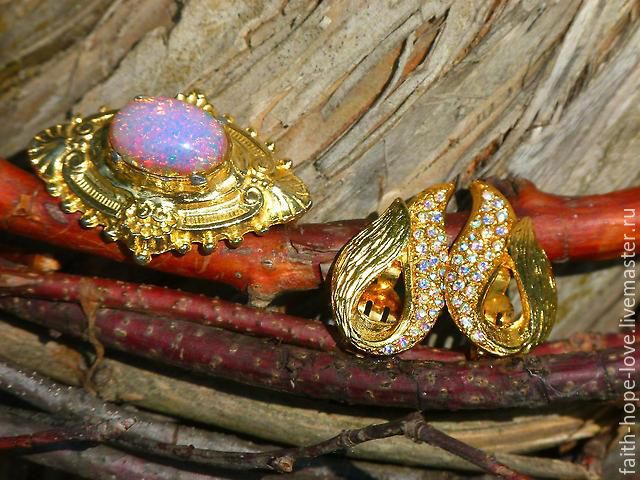

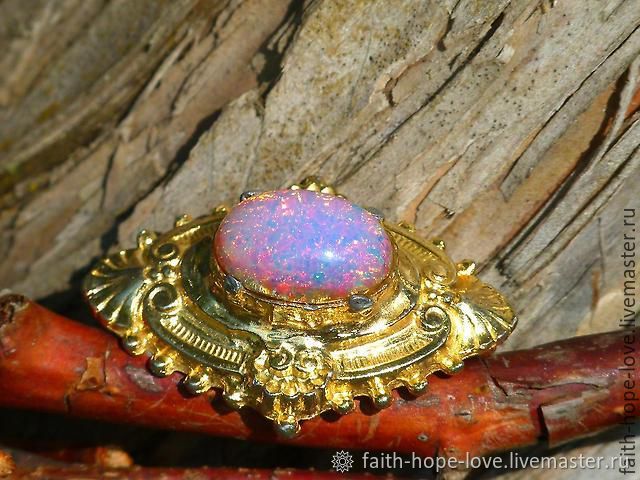
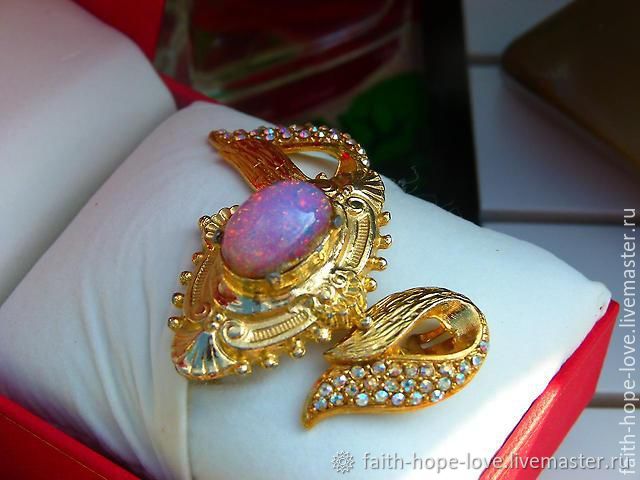
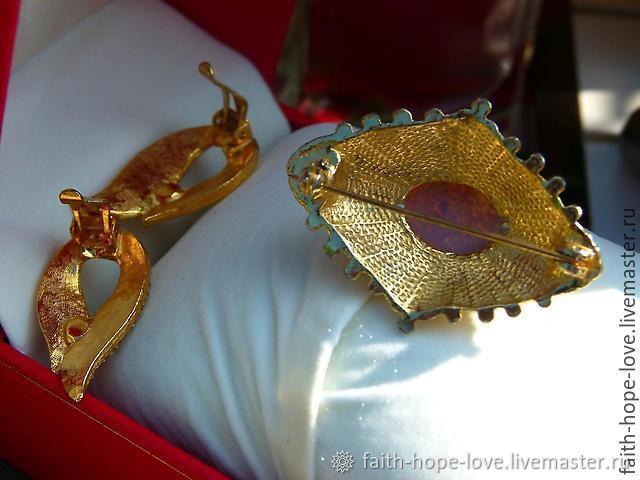
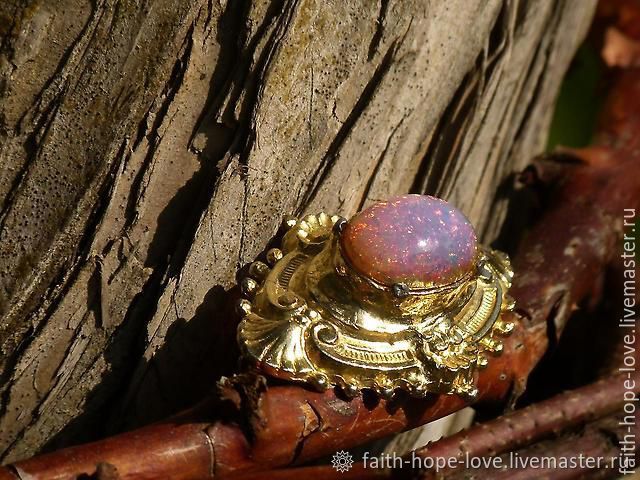
Baroque style! (brooch clips) 'Magic Day' 1960, Vintage jewelry sets, Krasnodar, Фото №1
$69.70
Description
Baroque style! Polopiryna (brooch clips) "Magic Day" 1960s.
Brought from an antique shop USA!
Gilding, John Slocum Opal, Aurora Borealis crystals! 1960, unbranded
A great gift for yourself and/or loved ones!!!
brooch-size-4h4,5 cm
-clip size-3h1,8 cm
.... Magic polopiryna for a Fabulous image...
A little about "John Slocum Opal":
Imitation opal
opal simulant, imitation opal
There are many technologies that allow to simulate natural opals. The most simple use glass or tinted translucent plastic. Known simulation - the so-called stone of John Slocum - flint glass with additives of calcium and magnesium. For this simulation the characteristic thin parallel layers, which cause the iridescence. The other imitation is the "opals" Pierre Gilson. They appeared in France in 1972 and produced on a commercial scale. Their method of manufacture is kept secret. To distinguish a imitation from natural stones can be too uniform distribution of color.
In 1964, appeared in the sale of so-called "stones Slocum", created by John Slocum from Michigan (USA) and represents a fine glass imitation opal. Anhydrous silicate glass produced by J.. Slocum was the result of lengthy experiments, constructed of very thin parallel layers of equal thickness composed of an amorphous glass. Such a "design" glass causes diffraction and the decomposition of light, i.e., the iridescence that looks very similar to opalescence; but under the microscope it is well visible that the color of iridescent spots in the "Slocum stone" are of a completely different nature than in natural opals. Slocum the density of the glass is slightly higher than natural opal (2,4—2,5 against a maximum of 2,2), the refractive index — also (of 1,49—1,52 against 1,44—1,46); but the hardness is the same (6 to 0,5). The material is easy to cut and well-polished, but it is characterized by high porosity and large fragility.
Good shopping! see all my lots! FANS OF VINTAGE DEDICATED!)))
Brought from an antique shop USA!
Gilding, John Slocum Opal, Aurora Borealis crystals! 1960, unbranded
A great gift for yourself and/or loved ones!!!
brooch-size-4h4,5 cm
-clip size-3h1,8 cm
.... Magic polopiryna for a Fabulous image...
A little about "John Slocum Opal":
Imitation opal
opal simulant, imitation opal
There are many technologies that allow to simulate natural opals. The most simple use glass or tinted translucent plastic. Known simulation - the so-called stone of John Slocum - flint glass with additives of calcium and magnesium. For this simulation the characteristic thin parallel layers, which cause the iridescence. The other imitation is the "opals" Pierre Gilson. They appeared in France in 1972 and produced on a commercial scale. Their method of manufacture is kept secret. To distinguish a imitation from natural stones can be too uniform distribution of color.
In 1964, appeared in the sale of so-called "stones Slocum", created by John Slocum from Michigan (USA) and represents a fine glass imitation opal. Anhydrous silicate glass produced by J.. Slocum was the result of lengthy experiments, constructed of very thin parallel layers of equal thickness composed of an amorphous glass. Such a "design" glass causes diffraction and the decomposition of light, i.e., the iridescence that looks very similar to opalescence; but under the microscope it is well visible that the color of iridescent spots in the "Slocum stone" are of a completely different nature than in natural opals. Slocum the density of the glass is slightly higher than natural opal (2,4—2,5 against a maximum of 2,2), the refractive index — also (of 1,49—1,52 against 1,44—1,46); but the hardness is the same (6 to 0,5). The material is easy to cut and well-polished, but it is characterized by high porosity and large fragility.
Good shopping! see all my lots! FANS OF VINTAGE DEDICATED!)))
How to keep
To love and to wear!
If necessary, please Ask for any additional Photos and Description!!!
If necessary, please Ask for any additional Photos and Description!!!
Доставка и оплата
Local pickup
(Krasnodar)
Free
Доставка по стране
(Russia)
from
$6.97
Условия и сроки доставки можно узнать у продавца до совершения покупки
Shipping
worldwide delivery
from
$21.45
Условия и сроки доставки можно узнать у продавца до совершения покупки
Free shipping
При покупке на сумму от $321.71
С этим товаром покупают
Related searches
Powered by Yandex.Translate

Baroque style! (brooch clips) "Magic Day" 1960
$69.70









